Gothic architecture, a style of design which developed from Romanesque architecture, emerged across Europe during the mid to late middle ages.
Characterised by high arches and vaulted ceilings, the gothic style can primarily be seen on church buildings, such as grand cathedrals and chapels, as well as on luxurious palaces.
However, many later medieval castles also had gothic styling, particularly as rich lords and monarchs wanted their castles to reflect the latest styles and fashions in order to make their castles grander and more prestigious.
Disclaimer: This post contains affiliate links. This means that should you click on certain links and then subsequently purchase a product, I will receive a small commission.
A Guide to Gothic Castles
The Development of Gothic Architecture
Originating in the 12th century in France and England, gothic architecture was a development of the Norman Romanesque style.
Largely influenced by a desire to make buildings grander and more prestigious, and by the theological trend for more natural light in churches, gothic architecture made use of advances in technology, and the design of vaulting and buttresses, which allowed structures to be built increasingly far higher and with larger windows.
In terms of churches and cathedrals, these developments meant that buildings could be larger and accommodate more pilgrims, as well as being powerful statements of wealth and power.
There is also evidence that the gothic style was influenced by elements of contemporary Islamic architecture. Naturally, castle builders wanted their buildings to be fashionable and symbolic of wealth and therefore incorporated gothic elements into their fortifications.
‘Gothic’ was not actually a term used by medieval writers to describe what we now call gothic architecture – instead, they referred to it using the Latin opus Francigenum (‘French work’), opus modernum (‘modern work’), or novum opus (‘new work’). The Italian maniera tedesca was also used, meaning ‘German-style’.
The term ‘Gothic’ actually appeared in the renaissance period and was used as a pejorative to refer negatively to late medieval architecture.
The Italian historian, painter and Architect Giorgio Vasari described gothic as a ‘barbarous German-style’ in his text Lives of the Artists – he a drew a connection between the Goths destroying Roman architecture and constructing new buildings after they conquered Rome and the medieval architecture which came before his time.
Crucially he considered ‘gothic’ architecture to be non-Italian, and therefore non-Roman and barbaric.
Features of Gothic Architecture
One of the most famous features of Gothic style is the pointed arch – arches were rounded in the preceding Romanesque style and they developed into pointed variations.
These pointed arches are perhaps the easiest way to spot a gothic building. Particularly in later examples of gothic buildings, the pointed arches became immensely tall and thin, emphasising the height of the structure and conjuring up imagery of towering spires, as well as letting in a large amount of light.
Pointed arches were not just used for windows, however: they were also used to frame doorways, in window tracery, and they were used to decorate arcades and facades.

The first gothic pointed arches were lancet windows, very tall and narrow windows, so named because of their resemblance to a lance (Salisbury Cathedral contains some good examples).
‘Flamboyant Gothic’ style developed highly decorated pointed arches known as arc-en-accolade, where doorway arches were topped with ornamental stonework, and small floral sculptures resembling cabbages known as chou-frisés.
While Romanesque architecture had employed semi-circular barrel vaulting, which required thick walls with small windows to support the weight of the roof, the gothic architecture used ribbed vaulting, made up of diagonally crossed arches.
The shape of these ribs directed the weight evenly outwards, and then down through columns to the floor of the building – the outward pressure on the walls was counteracted through increased use of buttresses and flying buttresses.
The upshot of this was that gothic structures could be built far higher than before, with much thinner walls which could also be decorated with large windows.
Generally, vaults were built with four ribs, but several variations were developed in England during the later gothic period, such as stellar vaults where the ribs formed the shape of a star, reticulated vaults where the ribs form a series of geometric shapes such as triangles and diamonds, and fan vaults where the rips project upwards and outwards in the shape of a fan.
The grand hall at Prague Castle in Bohemia has highly elaborate ‘Rococo Gothic’ vaults which intertwine into incredible patterns.
Columns became crucial in gothic architecture as they supported the weight of the ribbed vaults and therefore the roof.
Early gothic columns generally alternated with extremely thick piers which were better able to support the weight pressing down from the vaults.
However, later on, these were replaced by clustered columns, which took the form of one central column surrounded by much smaller, thinner columns, known as colonettes.
Often the tops of the columns (known as capitals) were decorated in the Roman Corinthian style, with elaborate symmetrical patterning in stone.
Later on in the period, columns generally became taller, and some were even built without capitals, making their height appear even greater.
Perhaps one of the most famous elements of gothic architecture is the flying buttress, half arch structures that helped the walls of a building to bear the weight of the roof, like standard buttresses.
These flying buttresses were often very elaborately decorated, and thanks to their reinforcement gothic buildings were able to be constructed much higher and with thinner walls. Some of the most famous flying buttresses in the world can be seen on Notre Dame in Paris.
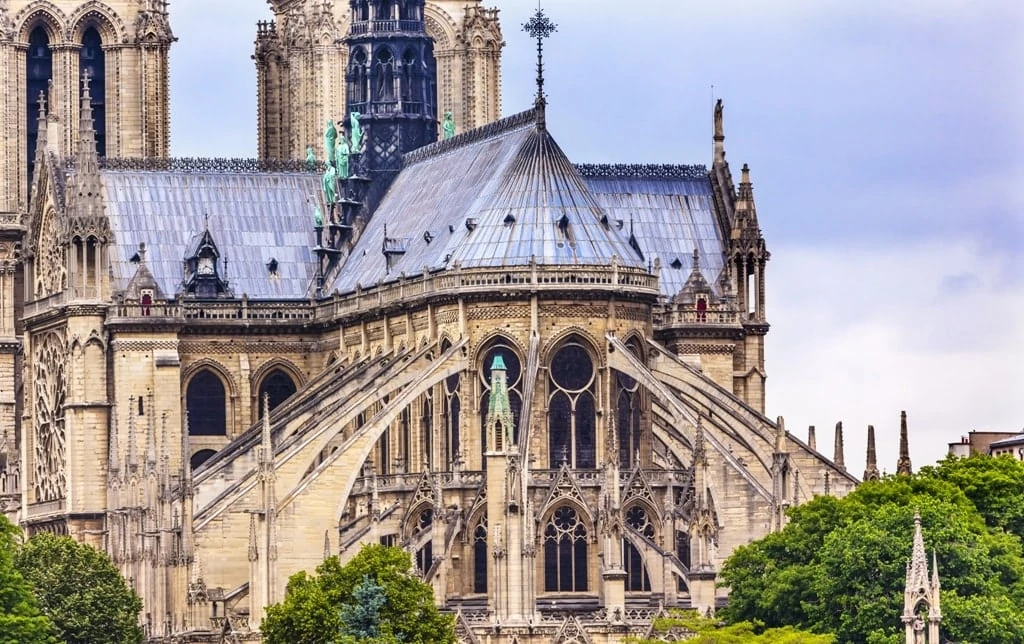
Spires also grew to be extremely high in gothic architecture, although they were almost always confined to churches and cathedrals rather than castles – they also tended to be highly decorated, both with fine masonry and metalwork.
Gothic bar tracery began to appear on windows – tracery is a technique whereby a larger window is divided through the use of moulded stone ‘ribs’, and usually refers to the stonework which makes up the frame of the window into which the glass is placed.
Before gothic style emerged, windows were built using plate tracery, where the glasswork was added to holes cut in the ashlar or masonry surface of the walls, whereas tracery in gothic architecture typically used ‘bar tracery’, where the glasswork of the windows was separated by moulded stone ‘mullions’.
Tracery became increasingly elaborate and highly decorative as the medieval period progressed: geometrical tracery used various geometric shapes to create repeating patterns, and reticulated tracery saw mullions arranged to give the window a net-like design.
What makes a Gothic Castle?
Although Gothic architecture was primarily employed to build churches and cathedrals, it was also used in castle architecture. As it was the latest style, nobles wishing to appear fashionable and project an image of their wealth often decorated their castles in gothic styles.
Essentially a gothic castle was a fortification that was built with the features described above. Although later medieval castles became increasingly uncomfortable as they developed thicker walls to defend against siege weapons, and many nobles preferred to live in manor houses or palaces, some castles began to be built as grand defensive structures in gothic style.
This happened particularly in Eastern Europe, where large gothic castles were not only powerful defensive fortifications, but also comfortable homes for the nobility with extensive room for accommodation.
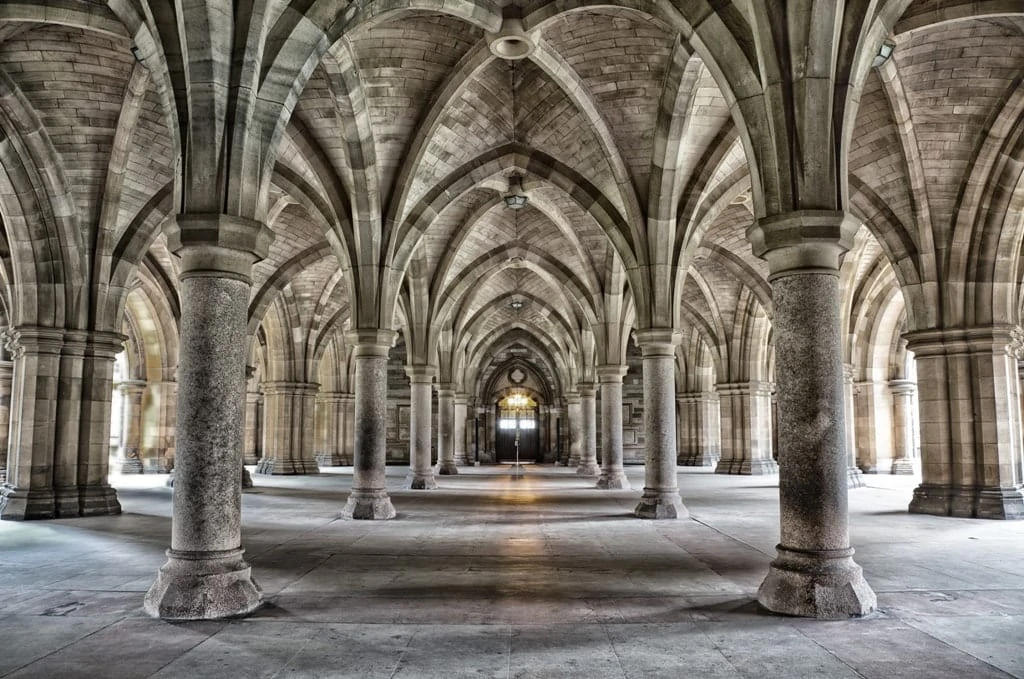
In western Europe, the functions of the castle as noble accommodation and military structure separated, being replaced by palaces and manor houses on one hand, and star forts on the other.
Gothic architectural decoration did not add to the defensive capabilities of a castle in any way, but it did represent lavish spending and fashionable design, which served to remind the vassals of a lord of their master’s superiority in a feudal society.
It is also worth mentioning the effect of later literature on our conception of ‘gothic castles’. In the 18th century, gothic novels became popular, which tended to be full of dark and mysterious imagery designed to terrify and excite readers.
Often the settings for these novels were old castles, and these medieval fortifications became the backdrop for all kinds of romantic tales involving ghosts and monsters – Frankenstein and Dracula are good examples of gothic stories, and the latter involves a castle.
As a result, the term ‘gothic castle’ can conjure up imagery of dark and decaying structures, with imposing and elaborate architecture.
Famous Gothic Castles
Hunyad Castle (Corvin Castle), Romania
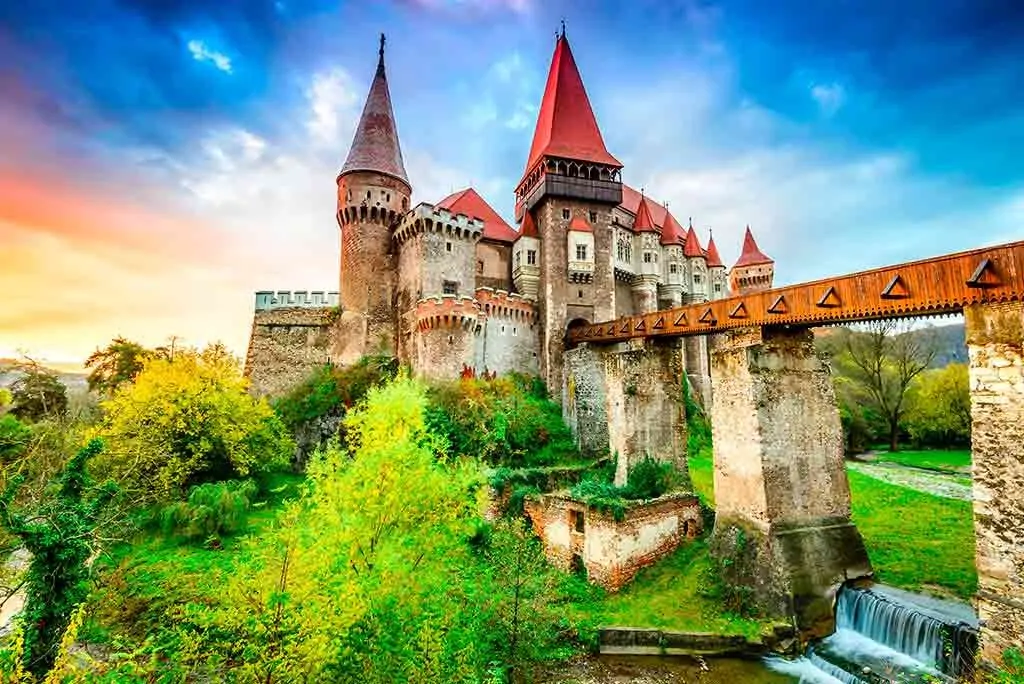
Said to have been the site where Vlad the Impaler was imprisoned, Hunyad castle (also known as Corvin Castle) is a large and imposing fortification built in the Renaissance-Gothic style.
The exterior of the structure includes ornate gothic arches with bar tracing on the windows, as well as tall, thin spires atop the towers. The interior of the castle also has a good deal of vaulting.
Hunyad was not only a strong defensive castle but also functioned as the luxurious home of John Hunyadi (1406-1456), a Hungarian nobleman who served as Voivode of Transylvania.
You might be interested in the following:
From Timisoara: Corvin Castle and Turda Salt Mine Day Trip
From Cluj: Day Trip to Corvin Castle and Alba Carolina
Malbork Castle, Poland
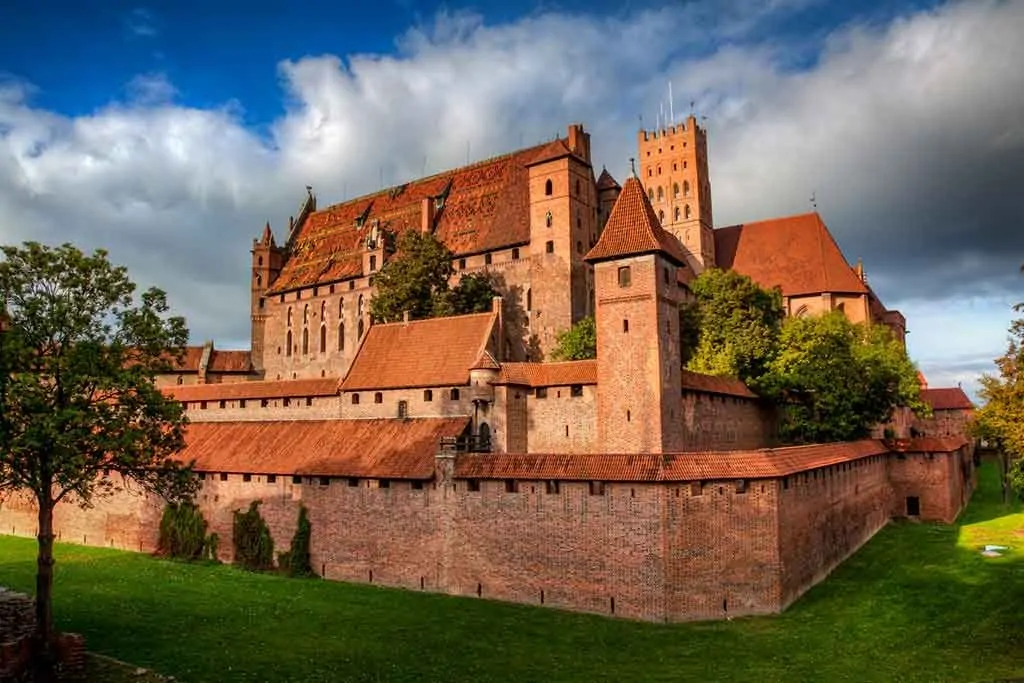
Originally built in the 13th century by the Teutonic knights, an order of German crusaders, Malbork is the largest castle in the world, covering an enormous 52 acres.
Built in brick, the fortress actually has three separate castles, separated by a series of dry moats, towers, and defensive walls.
It is also the largest fortified Gothic building in Europe and features some of the hallmarks of gothic style, including pointed arches, bar tracing, and spires.
Mir Castle, Belarus

Construction on this castle, built in the Polish Gothic style, began in the early 16th century. The castle consists of five towers between which there are curtain walls, which create a square compound 75 metres in length along each side.
Although the fortress was later redecorated according to renaissance styles, elements of its original gothic design remain.
Zvíkov Castle, Czech Republic
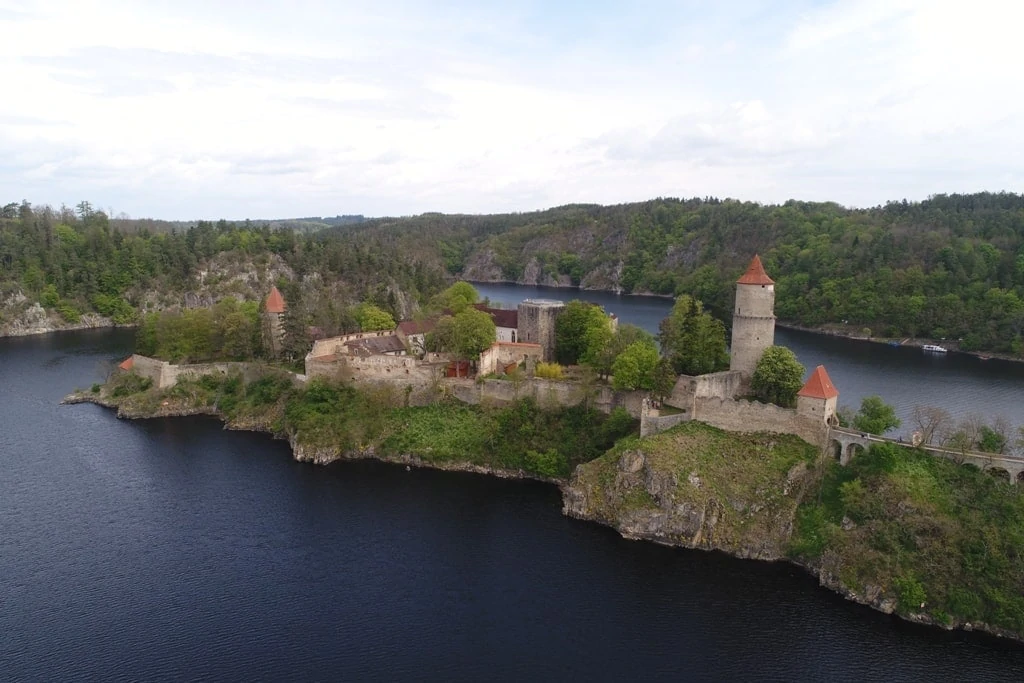
Situated at the junction of the Vltava and Otava rivers, Zvíkov was continually upgraded during the medieval period. It was a powerful fortification, and successfully repelled a four-month Hussite siege in 1429 despite the use of artillery by the besieging army.
The castle contains elements of gothic architecture such as bar tracing and pointed arches, particularly in the residential palace buildings which form some of the oldest parts of the castle.
There are also a series of mural decoration in the chapel of St. Wenceslaus which are an excellent example of early Czech gothic.
Kuressaare Castle, Estonia
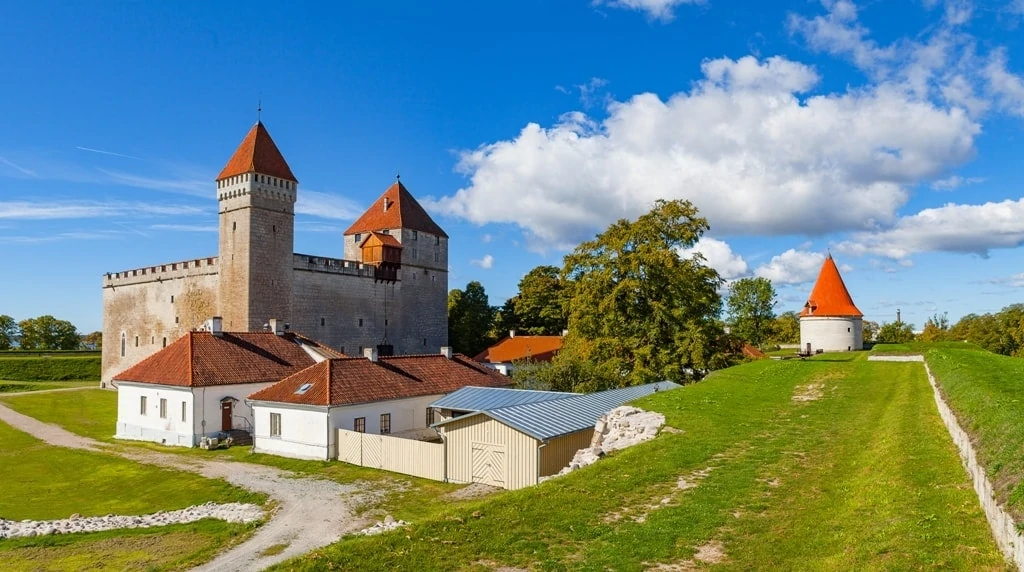
Built by the Teutonic Order on the island of Saaremaa off the coast of western Estonia, this late gothic castle is very simplistic in appearance. It is formed of a square central building based around a courtyard featuring windows with gothic arches. There is also a 37-metre-tall defensive tower in the northern corner, which has a distinctive spire on top.
Diósgyőr Castle, Hungary
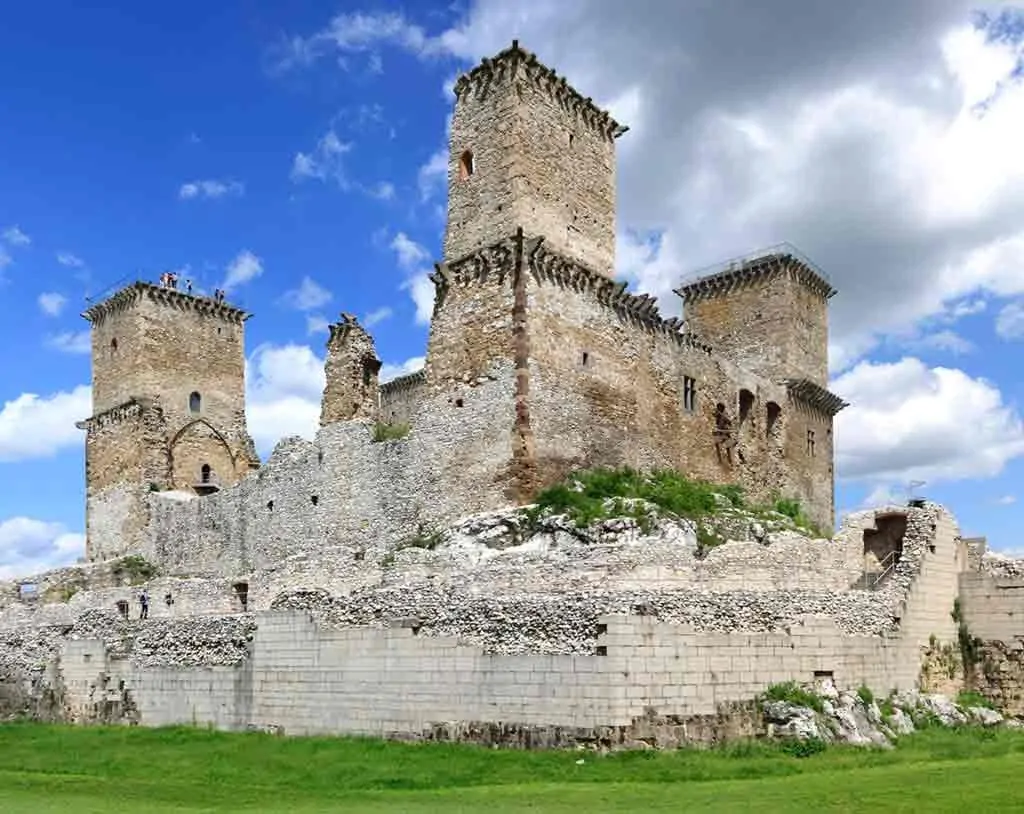
After the original castle was destroyed in the mid-12th century by the invading Mongols, Diósgyőr was rebuilt, probably by king Bela IV.
Over the next two centuries, the castle was modernised and modelled in the gothic style, based around a rectangular courtyard surrounded by four towers and curtain walls.
The castle underwent restoration work in the 20th century – the work was only finally completed in 2014.
Kaunas Castle, Lithuania
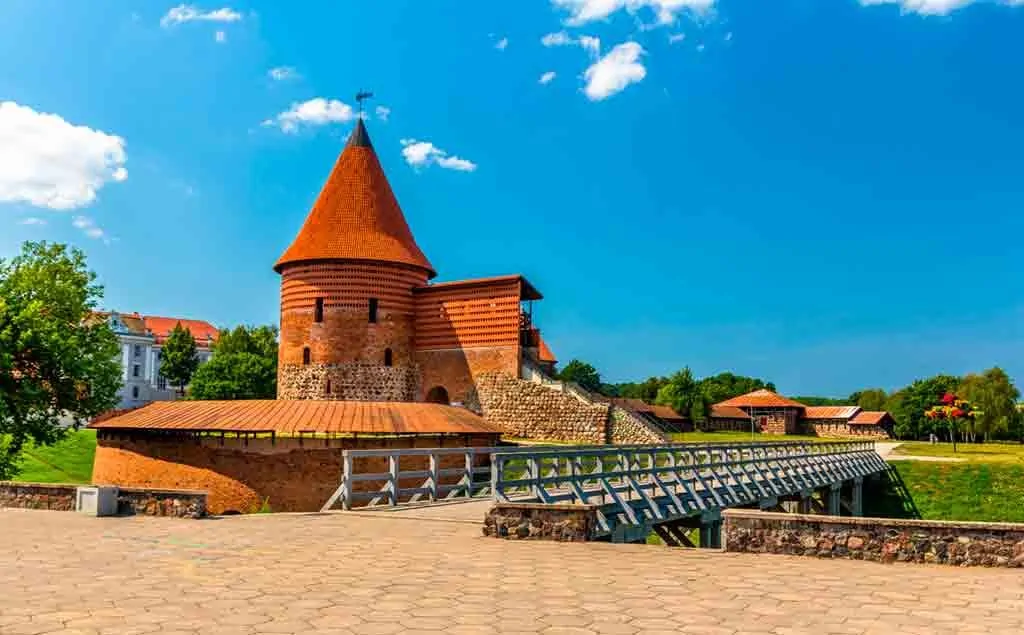
Built in the mid-14th century in gothic style, Kaunas castle features impressive spires on top of its towers.
The fortification is situated on the banks of the strategically important Nemunas river and was captured by the Teutonic knights after a bloody siege in 1362.
The castle was recaptured and taken again, before finally being reclaimed by the Lithuanians using cannons and trebuchets in 1384.
